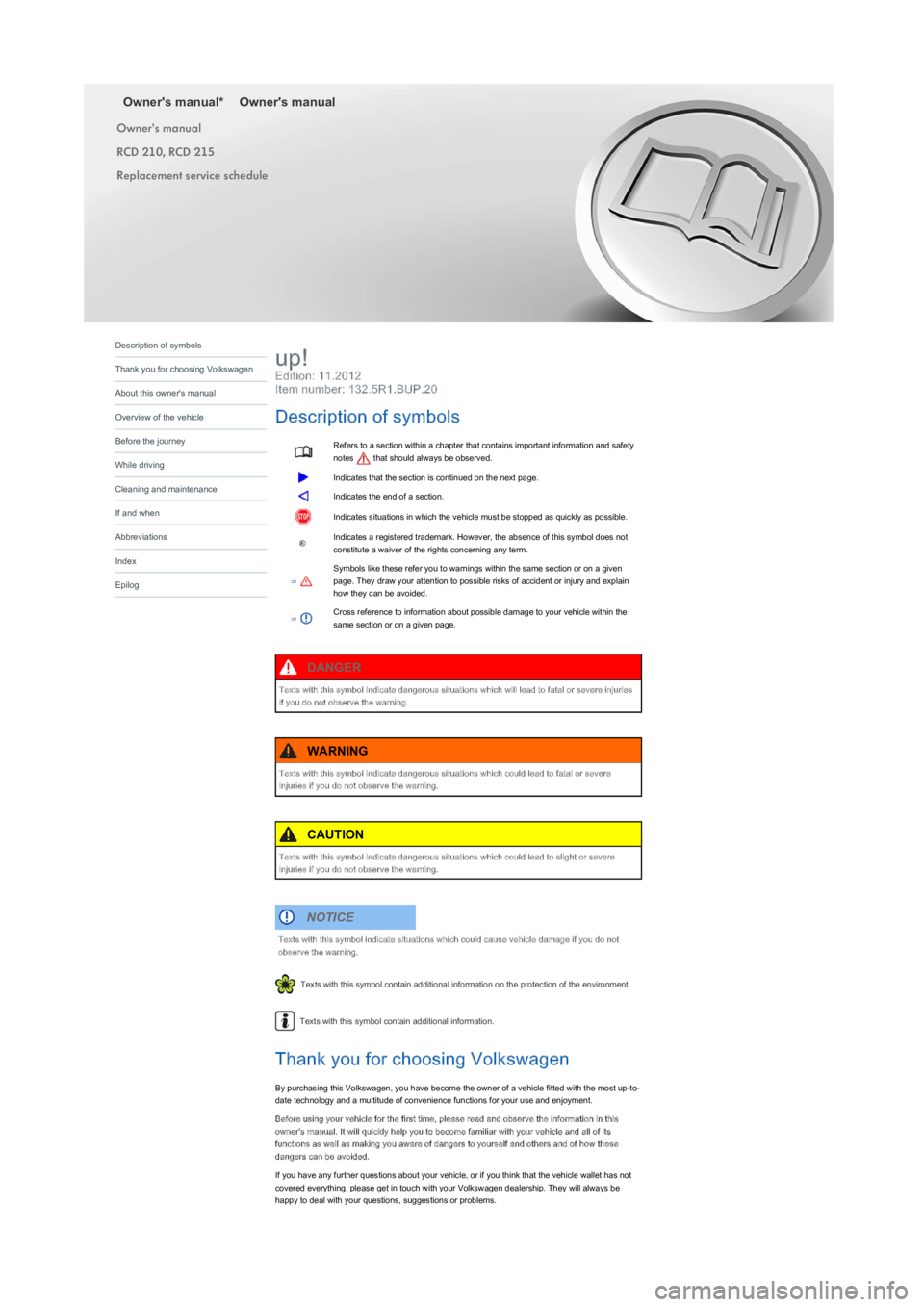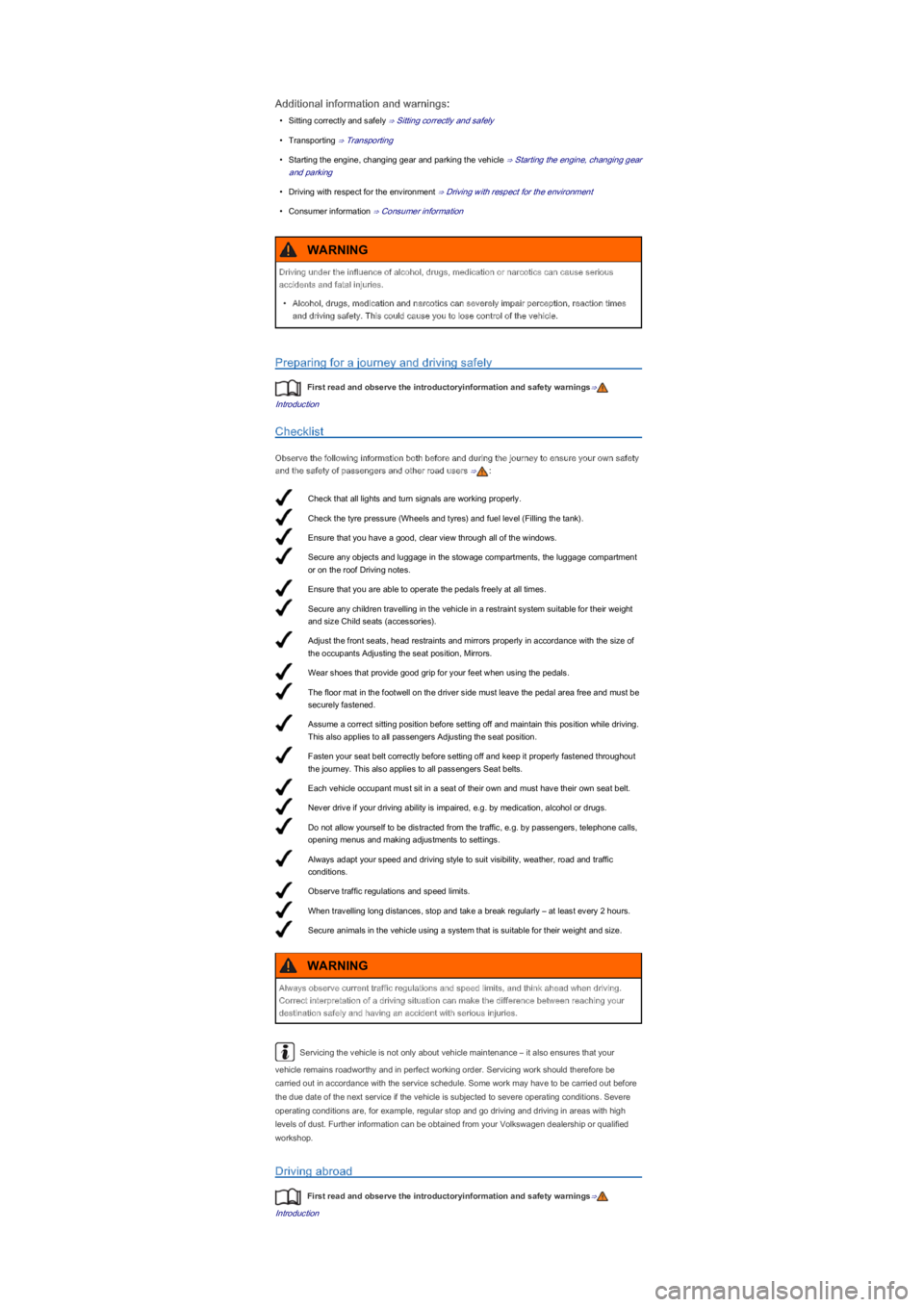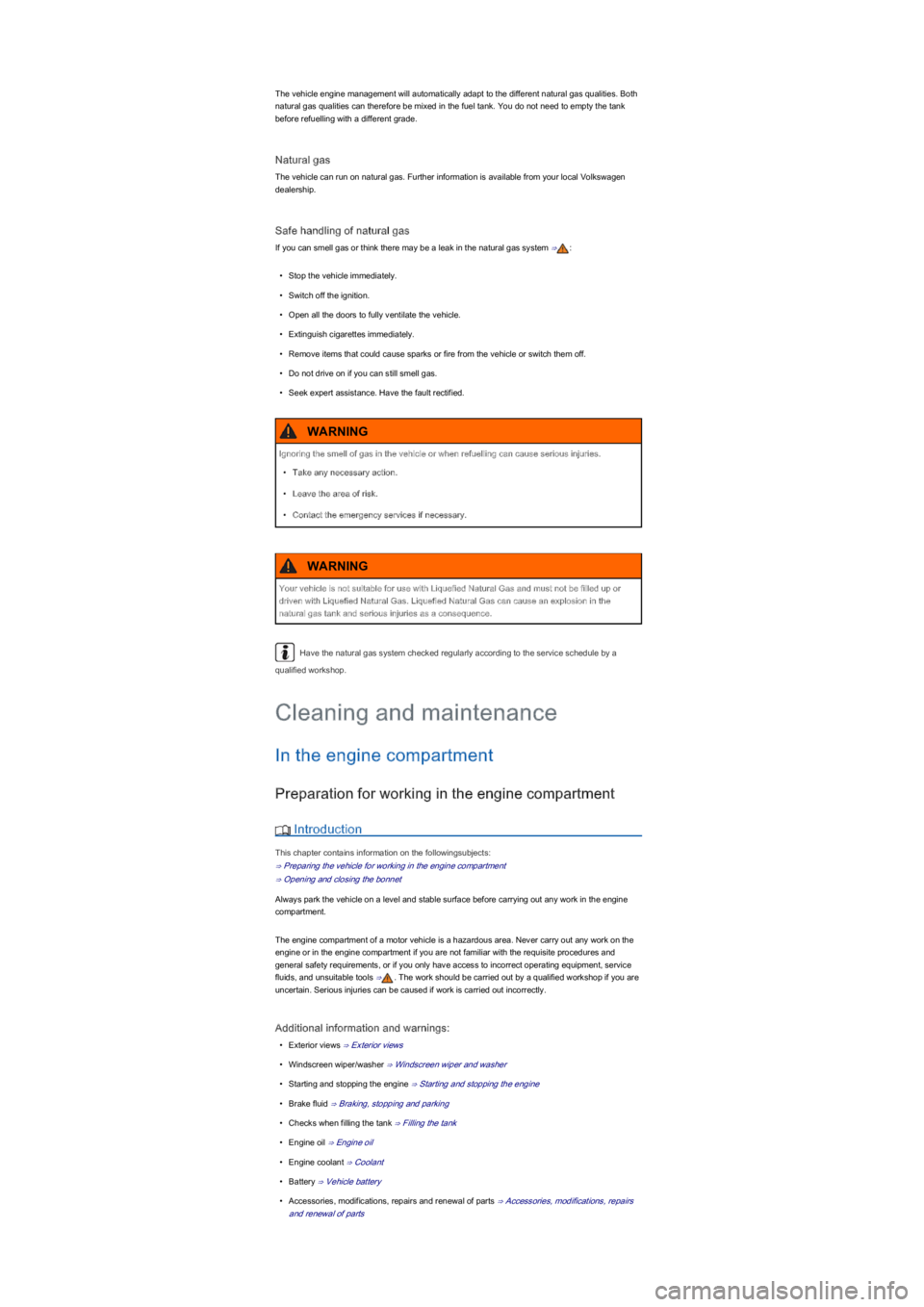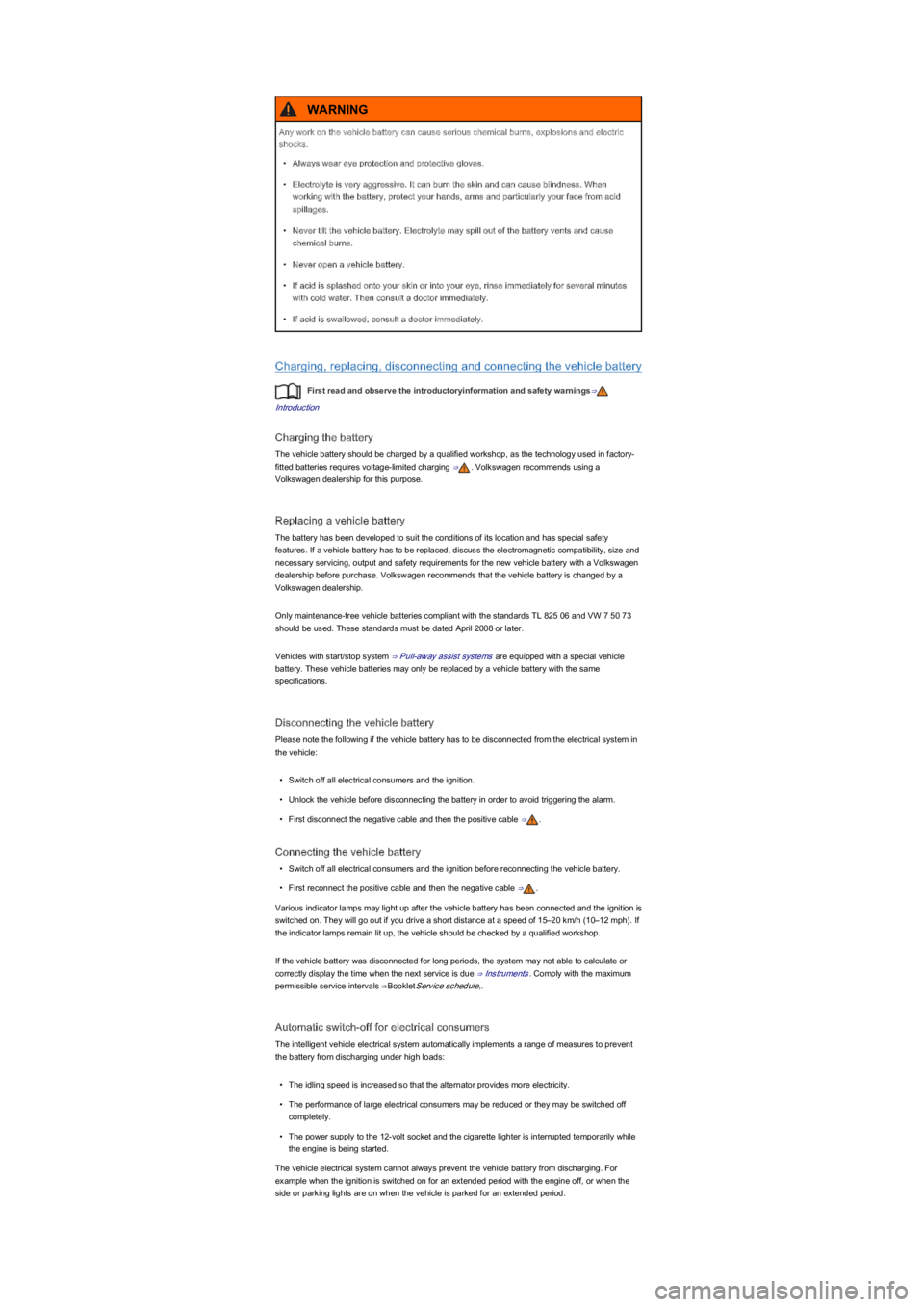maintenance schedule VOLKSWAGEN UP! 2021 Owner´s Manual
[x] Cancel search | Manufacturer: VOLKSWAGEN, Model Year: 2021, Model line: UP!, Model: VOLKSWAGEN UP! 2021Pages: 211, PDF Size: 5.98 MB
Page 1 of 211

Owner's manual*Owner's manual
Owner's manual
RCD 210, RCD 215
Replacement service schedule
Edition: 11.2012
Item number: 132.5R1.BUP.20
Refers to a section within a chapter that contains important information and safety
notes that should always be observed.
Indicates that the section is continued on the next page.
Indicates the end of a section.
Indicates situations in which the vehicle must be stopped as quickly as possible.
®Indicates a registered trademark. However, the absence of this symbol does not
constitute a waiver of the rights concerning any term.
⇒
Symbols like these refer you to warnings within the same section or on a given
page. They draw your attention to possible risks of accident or injury and explain
how they can be avoided.
⇒Cross reference to information about possible damage to your vehicle within the
same section or on a given page.
Texts with this symbol contain additional information on the protection of the environment.
Texts with this symbol contain additional information.
Thank you for choosing Volkswagen
By purchasing this Volkswagen, you have become the owner of a vehicle fitted with the most up-to-
date technology and a multitude of convenience functions for your use and enjoyment.
Before using your vehicle for the first time, please read and observe the information in this
owner's manual. It will quickly help you to become familiar with your vehicle and all of its
functions as well as making you aware of dangers to yourself and others and of how these
dangers can be avoided.
If you have any further questions about your vehicle, or if you think that the vehicle wallet has not
covered everything, please get in touch with your Volkswagen dealership. They will always be
happy to deal with your questions, suggestions or problems.
up!
Description of symbols
Texts with this symbol indicate dangerous situations which will lead to fatal or severe injuries
if you do not observe the warning.
DANGER
Texts with this symbol indicate dangerous situations which could lead to fatal or severe
injuries if you do not observe the warning.
WARNING
Texts with this symbol indicate dangerous situations which could lead to slight or severe
injuries if you do not observe the warning.
CAUTION
Texts with this symbol indicate situations which could cause vehicle damage if you do not
observe the warning.
NOTICE
Description of symbols
Thank you for choosing Volkswagen
About this owner's manual
Overview of the vehicle
Before the journey
While driving
Cleaning and maintenance
If and when
Abbreviations
Index
Epilog
Page 15 of 211

Check that all lights and turn signals are working properly.
Check the tyre pressure (Wheels and tyres) and fuel level (Filling the tank).
Ensure that you have a good, clear view through all of the windows.
Secure any objects and luggage in the stowage compartments, the luggage compartment
or on the roof Driving notes.
Ensure that you are able to operate the pedals freely at all times.
Secure any children travelling in the vehicle in a restraint system suitable for their weight
and size Child seats (accessories).
Adjust the front seats, head restraints and mirrors properly in accordance with the size of
the occupants Adjusting the seat position, Mirrors.
Wear shoes that provide good grip for your feet when using the pedals.
The floor mat in the footwell on the driver side must leave the pedal area free and must be
securely fastened.
Assume a correct sitting position before setting off and maintain this position while driving.
This also applies to all passengers Adjusting the seat position.
Fasten your seat belt correctly before setting off and keep it properly fastened throughout
the journey. This also applies to all passengers Seat belts.
Each vehicle occupant must sit in a seat of their own and must have their own seat belt.
Never drive if your driving ability is impaired, e.g. by medication, alcohol or drugs.
Do not allow yourself to be distracted from the traffic, e.g. by passengers, telephone calls,
opening menus and making adjustments to settings.
Always adapt your speed and driving style to suit visibility, weather, road and traffic
conditions.
Observe traffic regulations and speed limits.
When travelling long distances, stop and take a break regularly – at least every 2 hours.
Secure animals in the vehicle using a system that is suitable for their weight and size.
Additional information and warnings:
•Sitting correctly and safely ⇒ Sitting correctly and safely
•Transporting ⇒ Transporting
•Starting the engine, changing gear and parking the vehicle ⇒ Starting the engine, changing gear
and parking
•Driving with respect for the environment ⇒ Driving with respect for the environment
•Consumer information ⇒ Consumer information
Preparing for a journey and driving safely
First read and observe the introductoryinformation and safety warnings⇒
Introduction
Checklist
Observe the following information both before and during the journey to ensure your own safety
and the safety of passengers and other road users ⇒:
Servicing the vehicle is not only about vehicle maintenance – it also ensures that your
vehicle remains roadworthy and in perfect working order. Servicing work should therefore be
carried out in accordance with the service schedule. Some work may have to be carried out before
the due date of the next service if the vehicle is subjected to severe operating conditions. Severe
operating conditions are, for example, regular stop and go driving and driving in areas with high
levels of dust. Further information can be obtained from your Volkswagen dealership or qualified
workshop.
Driving abroad
First read and observe the introductoryinformation and safety warnings⇒
Introduction
Driving under the influence of alcohol, drugs, medication or narcotics can cause serious
accidents and fatal injuries.
•Alcohol, drugs, medication and narcotics can severely impair perception, reaction times
and driving safety. This could cause you to lose control of the vehicle.
WARNING
Always observe current traffic regulations and speed limits, and think ahead when driving.
Correct interpretation of a driving situation can make the difference between reaching your
destination safely and having an accident with serious injuries.
WARNING
Page 131 of 211

The vehicle engine management will automatically adapt to the different natural gas qualities. Both
natural gas qualities can therefore be mixed in the fuel tank. You do not need to empty the tank
before refuelling with a different grade.
Natural gas
The vehicle can run on natural gas. Further information is available from your local Volkswagen
dealership.
Safe handling of natural gas
If you can smell gas or think there may be a leak in the natural gas system ⇒:
•Stop the vehicle immediately.
•Switch off the ignition.
•Open all the doors to fully ventilate the vehicle.
•Extinguish cigarettes immediately.
•Remove items that could cause sparks or fire from the vehicle or switch them off.
•Do not drive on if you can still smell gas.
•Seek expert assistance. Have the fault rectified.
Have the natural gas system checked regularly according to the service schedule by a
qualified workshop.
In the engine compartment
Preparation for working in the engine compartment
Introduction
This chapter contains information on the followingsubjects:
⇒ Preparing the vehicle for working in the engine compartment
⇒ Opening and closing the bonnet
Always park the vehicle on a level and stable surface before carrying out any work in the engine
compartment.
The engine compartment of a motor vehicle is a hazardous area. Never carry out any work on the
engine or in the engine compartment if you are not familiar with the requisite procedures and
general safety requirements, or if you only have access to incorrect operating equipment, service
fluids, and unsuitable tools ⇒. The work should be carried out by a qualified workshop if you are
uncertain. Serious injuries can be caused if work is carried out incorrectly.
Additional information and warnings:
•Exterior views ⇒ Exterior views
•Windscreen wiper/washer ⇒ Windscreen wiper and washer
•Starting and stopping the engine ⇒ Starting and stopping the engine
•Brake fluid ⇒ Braking, stopping and parking
•Checks when filling the tank ⇒ Filling the tank
•Engine oil ⇒ Engine oil
•Engine coolant ⇒ Coolant
•Battery ⇒ Vehicle battery
•Accessories, modifications, repairs and renewal of parts ⇒ Accessories, modifications, repairs
and renewal of parts
Ignoring the smell of gas in the vehicle or when refuelling can cause serious injuries.
•Take any necessary action.
•Leave the area of risk.
•Contact the emergency services if necessary.
WARNING
Your vehicle is not suitable for use with Liquefied Natural Gas and must not be filled up or
driven with Liquefied Natural Gas. Liquefied Natural Gas can cause an explosion in the
natural gas tank and serious injuries as a consequence.
WARNING
Cleaning and maintenance
Page 144 of 211

Charging, replacing, disconnecting and connecting the vehicle battery
First read and observe the introductoryinformation and safety warnings⇒
Introduction
Charging the battery
The vehicle battery should be charged by a qualified workshop, as the technology used in factory-
fitted batteries requires voltage-limited charging ⇒. Volkswagen recommends using a
Volkswagen dealership for this purpose.
Replacing a vehicle battery
The battery has been developed to suit the conditions of its location and has special safety
features. If a vehicle battery has to be replaced, discuss the electromagnetic compatibility, size and
necessary servicing, output and safety requirements for the new vehicle battery with a Volkswagen
dealership before purchase. Volkswagen recommends that the vehicle battery is changed by a
Volkswagen dealership.
Only maintenance-free vehicle batteries compliant with the standards TL 825 06 and VW 7 50 73
should be used. These standards must be dated April 2008 or later.
Vehicles with start/stop system ⇒ Pull-away assist systems are equipped with a special vehicle
battery. These vehicle batteries may only be replaced by a vehicle battery with the same
specifications.
Disconnecting the vehicle battery
Please note the following if the vehicle battery has to be disconnected from the electrical system in
the vehicle:
•Switch off all electrical consumers and the ignition.
•Unlock the vehicle before disconnecting the battery in order to avoid triggering the alarm.
•First disconnect the negative cable and then the positive cable ⇒.
Connecting the vehicle battery
•Switch off all electrical consumers and the ignition before reconnecting the vehicle battery.
•First reconnect the positive cable and then the negative cable ⇒.
Various indicator lamps may light up after the vehicle battery has been connected and the ignition is
switched on. They will go out if you drive a short distance at a speed of 15–20 km/h (10–12 mph). If
the indicator lamps remain lit up, the vehicle should be checked by a qualified workshop.
If the vehicle battery was disconnected for long periods, the system may not able to calculate or
correctly display the time when the next service is due ⇒ Instruments. Comply with the maximum
permissible service intervals ⇒BookletService schedule,.
Automatic switch-off for electrical consumers
The intelligent vehicle electrical system automatically implements a range of measures to prevent
the battery from discharging under high loads:
•The idling speed is increased so that the alternator provides more electricity.
•The performance of large electrical consumers may be reduced or they may be switched off
completely.
•The power supply to the 12-volt socket and the cigarette lighter is interrupted temporarily while
the engine is being started.
The vehicle electrical system cannot always prevent the vehicle battery from discharging. For
example when the ignition is switched on for an extended period with the engine off, or when the
side or parking lights are on when the vehicle is parked for an extended period.
Any work on the vehicle battery can cause serious chemical burns, explosions and electric
shocks.
•Always wear eye protection and protective gloves.
•Electrolyte is very aggressive. It can burn the skin and can cause blindness. When
working with the battery, protect your hands, arms and particularly your face from acid
spillages.
•Never tilt the vehicle battery. Electrolyte may spill out of the battery vents and cause
chemical burns.
•Never open a vehicle battery.
•If acid is splashed onto your skin or into your eye, rinse immediately for several minutes
with cold water. Then consult a doctor immediately.
•If acid is swallowed, consult a doctor immediately.
WARNING